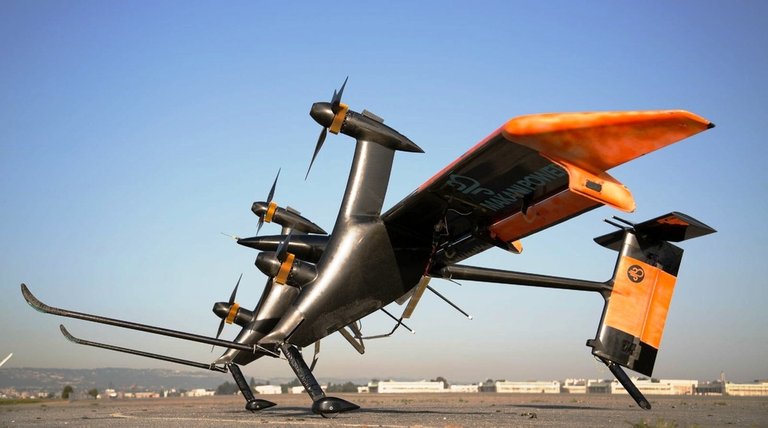
For over a century, researchers and specialists have cooked up approaches to draw power from 'high height' winds. Up to this point, however, the engineers' compass has surpassed their grip. Welcome Makani Power ('makani' is the Hawaiian word for wind), one of a few organizations out to change that. The Makani Kite is about a one hundred foot long, carbon fiber wing lined with turbines and is fit for flying at an altitude of eight hundred to two thousand feet in the sky, creating six hundred kilowatts of energy along the way. Energy is exchanged to the electrical network by means of long wires gripping the ground or to floating out at the sea. The gadget files in circles opposite the wind, copying the way a turning turbine cutting edge works; the flaps make this effect possible.
Makani's layout permits the flying wind turbine to draw energy at an unsubsidized expense against that of coal and cheaper than your average wind turbine cost.
However, the airborne wind turbines have received some negative criticism, an excessive amount of it. That is because the majority of the problems with the current design stem from the arrangement of the turbines. As a portable, higher elevation vehicle, the airborne wind turbine will likely face a ton of issues. Some positive notes however, are that in the event that a herd of fledglings moves into a region, the turbine itself can essentially be moved. Additionally, birds won't have the capacity to roost on an airborne turbine and definitely not settle on one.
In its beginning stages, the Makani airborne wind turbine pulled in a considerable measure of consideration for its blend of periphery and attainability. In 2006, Google invested $10 million in the organization through a renewable energy initiative. In 2010, Makani was granted an award from the Advanced Research Projects Agency for the Department of Energy (ARPA-E) in light of a call for a proposition for disruptive technologies and 'long shot' projects; those utilizing a profoundly diverse quality of frameworks to overturn existing ideal models. The enthusiasm for clean energy from ARPA-E was a piece of a larger exertion that columnist Michael Grunewald, as of late, called 'the quiet green transformation.' An investment of more than ninety billion dollars in wind, sun powered, and bio fuels ventures, not to mention a variety of other things.
Now, after two years and millions of dollars later, the team has a working model which they have since scaled up; they are, as of now, testing a wing that is thirty feet long and produces thirty kilowatts of energy. Hardham estimates that Makani is three to four years from having the full scale airborne turbine industrially accessible. He imagines squadrons of these turbines buzzing around in incredible circles for quite a long time. At least now, building these things is no longer a test in principle, it is only a matter of design.
SOURCE: Google Makani
Very cool. It would be interesting to see what regulations they face from the aviation side, since their max height could interfere with aircraft. With tall buildings they just need proper warning lights, but this thing moves, along with its tether. Wonder if they'll have to file flight plans.
I find it slightly weird that the thing can harness the wind both for keeping the height, carrying electric cables, flying forward and in addition turn the turbines and create energy. Jjust from the look of it, I would assume the turbines to generate too much air resistance and weight, causing the whole thing to stall and fall down. I think other designs are based on the mechanical energy being converted to electricity on the ground. But what do I know - I suppose the engineers have done their calculations.
The site says nothing about security - what if such a thing would fall uncontrolled down? Do they assert it won't happen, do they make security features making a controlled crash most likely should something go awfully wrong, or do they simply disallow trespassing in the risk zone?
Up through the times lots of cool engineering projects have been initiated to harness wind or waves, even to pull energy from the mixing of river water with salty sea water, or harness the temperature deltas between the ocean surface and the water at 20 metres depth, but rarely they scale up to commercial operations.
SkySails is one example I can think of. Apparently a small investment and installation on just about any existing cargo ship, and the shipping company may in average save some 5-6% of the fuel costs by utilizing high-attitude winds, without compromising on the shipping time. (Of course it is possible to save 100% of the fuel costs by using such systems if one is willing to increase the shipping time slightly and decrease the delivery time predictability). From what I understand, the investment would be paid down within a year or two from the saved fuel costs.
The company was founded in 2001, the first pilots started in 2007 ... and what has happened since? Not much, except for layoffs.
Wikipedia has more information about other projects utilizing high winds at High-altitude wind power and Kite rig.
nice writing and photo. thank you @anonnews
Renewable energy sources are the "in thing". They are clean and thus posses little or no hazard.
The wind is denser close to sea level onshore. The makini wind turbine can hover above the sea to harness this denser wind which amounts to more power.
Interesting technology. Is the idea to pick up wind where not available on the ground? Is it cheaper per megawatt than conventional wind turbine?